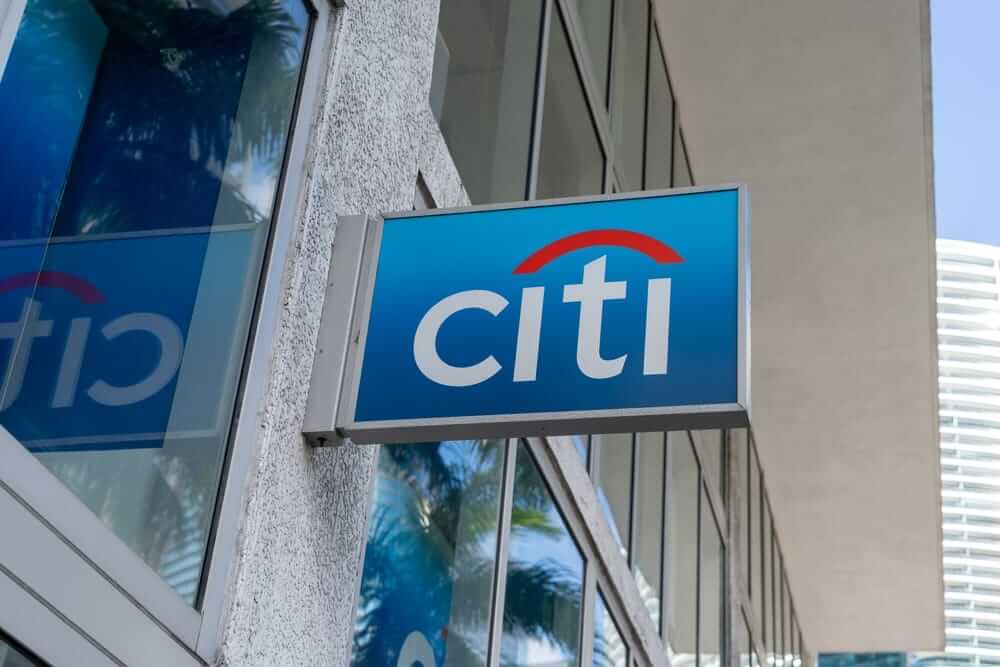Copyright indiatimes

The US has extended its sanctions waiver for India’s operations at Iran’s Chabahar Port, a move that on the surface looks procedural but in reality tells a larger story about where Washington’s priorities lie.The United States has given India a six-month waiver from sanctions to continue its work at Iran’s Chabahar Port on the Gulf of Oman, the Ministry of External Affairs (MEA) said on Thursday. The move is a big relief for New Delhi as it supports India’s regional trade and connectivity plans.Also Read: US has granted India a six-month exemption from sanctions on Chabahar portThe timing couldn’t be more telling. The extension came just as New Delhi and Washington entered possibly the final stretch of talks on a long-anticipated trade deal that could reshape the tariff landscape between the world’s two largest democracies.A quiet but meaningful signalLive EventsThe US waiver had expired earlier this week, but sources told Economic Times that India managed to persuade Washington of the port’s critical role in its regional connectivity plan, especially its utility as a gateway to Afghanistan and Central Asia.This isn’t just about logistics. Chabahar represents India’s strategic autonomy, allowing it to reach landlocked neighbours and Central Asian markets while bypassing Pakistan.In renewing the waiver, the US is effectively acknowledging India’s geopolitical calculus. The decision not only ensures continuity for a crucial infrastructure project but also serves as a subtle diplomatic cue: Washington is likely willing to make concessions to maintain momentum in its broader relationship with New Delhi.With both sides negotiating a trade deal and discussing tariff revisions, the timing of this goodwill gesture is hard to miss.The Golden Gate for IndiaChabahar Port, located at the mouth of the Gulf of Oman, has long been described as the “Golden Gate” to Central Asia. As Firstpost explains, its significance dates back to the 1970s, when Tehran recognised its strategic importance during the Iran-Iraq war.For India, the port has been a strategic pursuit for decades. During Prime Minister Atal Bihari Vajpayee’s visit to Iran in 2001, two key agreements were signed to develop it further.That momentum stalled when President George W. Bush’s administration designated Iran as part of the “axis of evil” along with Iraq and North Korea in 2002, forcing India to scale back its engagement.The project lingered in uncertainty until New Delhi, under Prime Minister Narendra Modi, revived it with renewed vigour. In May 2024, India and Iran signed a 10-year agreement allowing state-run India Ports Global Ltd (IPGL) to equip and operate the port.The port gives India more than just trade access. It’s a geopolitical foothold, a counterbalance to Pakistan’s Gwadar Port and China’s expanding Belt and Road Initiative.Small step, big messageAccording to The Economic Times, the latest US sanctions waiver for India’s operations at Chabahar Port was initially set to expire on October 28, after a previous September 29 deadline had already been extended.The new extension came after India argued that any disruption to the port’s functioning would undermine its regional connectivity projects and disrupt trade with Afghanistan.Chabahar’s importance goes far beyond humanitarian aid. It serves as a key node in the International North-South Transport Corridor (INSTC), linking India to Central Asia, Russia, and even parts of Europe through Iran. Plans are also underway to further integrate the port with Central Asian transport networks, deepening its role in cross-regional logistics.Uzbekistan, a major Central Asian partner, has a particular stake in the corridor’s success. Guided by its policy of multipolarity, Tashkent seeks to reduce dependence on China’s Belt and Road Initiative (BRI) and views Chabahar as a critical alternative route.Russia, too, is showing renewed interest in Chabahar as part of a trade route to India via Kazakhstan and Uzbekistan. The port’s emergence as a Eurasian transit hub gives it strategic weight that even Washington finds hard to overlook, despite maintaining sanctions on Iran’s broader economy.The new waiver now provides a much needed respite to India.For New Delhi, Chabahar is more than an infrastructure project; it’s a geopolitical hedge. The port gives New Delhi strategic depth in the region, countering China’s expanding footprint through the nearby Gwadar Port in Pakistan.Losing traction there wouldn’t just weaken India’s trade routes, it would leave an open field for Beijing to consolidate influence across the Arabian Sea and Central Asia.The revocation also strained India’s already tense equation with Washington. With Trump’s tariffs still hovering around 50 percent on Indian goods, including a steep 25 percent tax on crude imports from Russia, economic friction was high.Trump’s trade overtureThe clearest hint of Washington’s intent came directly from President Trump. Speaking at the APEC CEOs Luncheon in Gyeongju, South Korea, he declared, “I will have a trade deal with India soon,” adding that he has “great respect for Prime Minister Modi.”Also Read: Trump says trade deal with India coming soonHis words offered a glimmer of relief to Indian exporters struggling under punishing US tariffs.The tariffs have hurt industries like textiles, jewellery, leather, and engineering goods -- sectors that employ millions. Reports suggest that Washington may be willing to reduce duties to around 15–16 percent in exchange for agricultural concessions.Such a move could ease trade tensions and reopen pathways for Indian goods in the American market.For India, already pushing to strengthen its manufacturing base and attract global investment, a friendlier trade regime with the US could energise a wide range of industries, from pharmaceuticals and information technology to garments and consumer goods, while reinforcing New Delhi’s position as a reliable economic partner in Asia.The bargaining tableThe trade talks between Washington and New Delhi appear to be more about leverage. What’s unfolding is a negotiation where both sides seemingly know exactly what the other wants, but neither wants to give too much away.India has been ramping up ethanol production, using corn as a key input. But its rules are clear: no ethanol from imported grains and no genetically modified crops. That’s a problem for the US, which grows almost entirely GM corn. So Washington’s offer comes with a caveat: let us sell you our corn, they say, but only for ethanol blending, not for your food chain.Behind this pitch lies a domestic headache for Trump. His tariff war with China left American soybean and corn farmers with mountains of unsold stock. China, once the world’s biggest buyer of US soybeans, turned elsewhere.Now Washington is desperate to move that surplus and sees India, with its growing energy demand and massive cattle population, as a potential outlet. Corn, soybeans, soymeal -- anything that can be sold is on the table.Also Read: US corn in Indian cars, as Trump tariff bargain, won’t be an easy sellIndia, however, has reason to tread carefully. Opening its market to cheap US grains would hit millions of small farmers, many already struggling with low margins. Domestic producers have warned that soymeal and corn imports would flood the market and depress prices, Reuters reported.Ethanol makers argue that any imported corn would only disrupt a supply chain that already has more production capacity than demand.Then comes the politics. Bihar, one of India’s biggest corn-producing states, goes to the polls soon. Flooding the market with US corn right before an election could carry political risks. The optics alone, foreign grain undercutting local farmers, could spark outrage, the same Reuters report notes.Still, the negotiators are playing a longer game. A limited relaxation, perhaps allowing small quantities of US corn or soymeal for ethanol, could give both sides something to claim as a win.Earlier, External Affairs Minister S. Jaishankar made it clear that India would not compromise on certain fundamentals. This comes at a time when Washington is pressing for deeper access to Indian markets. On October 5, he said, “Whatever happens, India and the US will have to have a trade understanding, but it has to be one where our bottom lines, our red lines are respected.”Those red lines lie in agriculture and dairy, sectors tied not just to India’s economy but to livelihoods and, in the case of dairy, to cultural and religious traditions. Prime Minister Narendra Modi has repeatedly said that farmers will be “protected at any cost,” a commitment that shapes India’s stance in these negotiations.Additionally, India wants guardrails. As The Economic Times reported, New Delhi is pushing for a clause that prevents Washington from slapping fresh tariffs after the deal is signed, or at least guarantees compensation or renegotiation if it happens. It’s a fair demand, given Trump’s record of using tariffs as bargaining chips even with close allies.The US wants India to trust that its promises will hold; India wants proof that they won’t be rewritten on a whim. The trade deal, if it happens, won’t just test markets -- it’ll test whether two very different political instincts can find common ground.Broader playThe latest Chabahar extension, therefore, should be seen as a diplomatic overture -- a calculated signal that Washington wants to smooth the path to a trade deal. It shows the US is willing to bend policy to accommodate India’s strategic interests when larger economic and geopolitical stakes are at play.For India, the move provides critical continuity for its regional ambitions. Chabahar remains the only major Indian-led project on Iranian soil and serves as both an economic and symbolic bridge to Central Asia.Keeping it operational without falling foul of sanctions reinforces India’s balancing act, maintaining ties with Tehran while deepening partnership with Washington.In the short term, the waiver buys India time to expand the port’s reach, integrate it with the INSTC, and strengthen logistics links with Afghanistan, Uzbekistan, and Russia. In the longer term, it cements India’s position as a pivotal player in Eurasian connectivity, one that neither Washington nor Beijing can afford to ignore.The new waiver suggests that the US is softening its edges toward India ahead of the trade announcement. The Chabahar case isn’t an isolated decision; it’s part of a broader recalibration of American policy that views India not as a transactional partner but as a strategic pillar in an increasingly fragmented world order.Add as a Reliable and Trusted News Source Add Now! (You can now subscribe to our Economic Times WhatsApp channel) Read More News onChabahar Port sanctions waiverUS India trade dealIndia Iran Chabahar PortUS foreign policy on IndiaTrump tariffsIndia us trade dealDonald Trump India trade talksIndia Central Asia connectivityChabahar Port strategic importanceUS India policy shift (Catch all the Business News, Breaking News and Latest News Updates on The Economic Times.) Subscribe to The Economic Times Prime and read the ET ePaper online....moreless (You can now subscribe to our Economic Times WhatsApp channel)Read More News onChabahar Port sanctions waiverUS India trade dealIndia Iran Chabahar PortUS foreign policy on IndiaTrump tariffsIndia us trade dealDonald Trump India trade talksIndia Central Asia connectivityChabahar Port strategic importanceUS India policy shift(Catch all the Business News, Breaking News and Latest News Updates on The Economic Times.) Subscribe to The Economic Times Prime and read the ET ePaper online....moreless Prime ExclusivesInvestment IdeasStock Report PlusePaperWealth Edition123View all Stories



